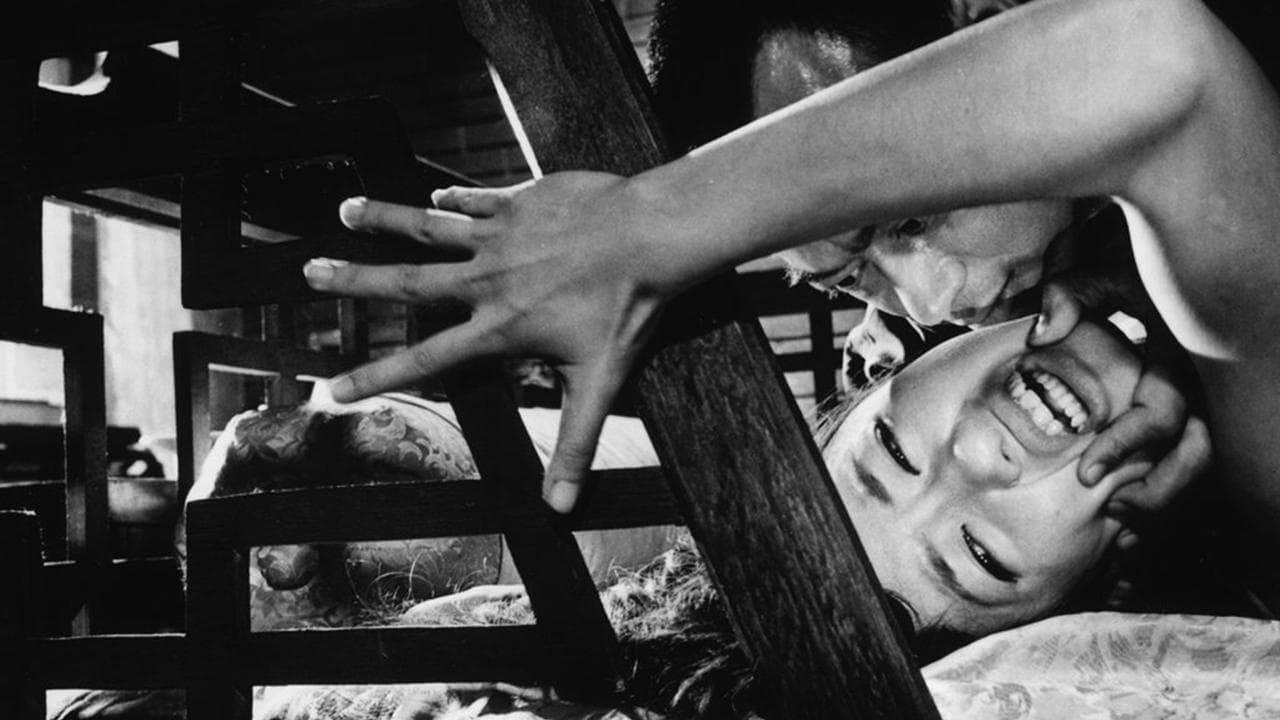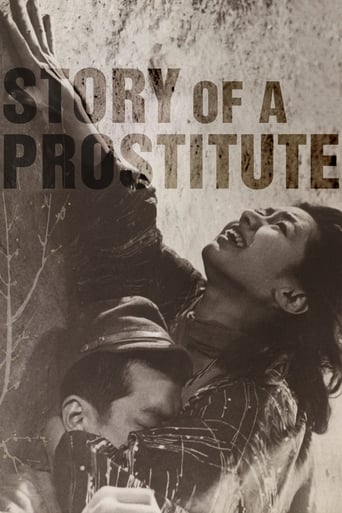

Story of a Prostitute is directed by the accomplished New Wave filmmaker Seijun Suzuki and is based upon Tamura Tajiro's story (Suzuki also adapted Tajiro's story Gate of Flesh). There is another film adaptation of the story, and it's called Escape at Dawn (1950), which was written by Akira Kurosawa and directed by Senkichi Taniguchi.Seijun Suzuki himself was a war veteran (same as Tamura Tajiro), and injected some of his firsthand experience in the story. Just like the 1950 film, this is also an anti-war picture, but with elements of dark humor and absurdity which reflects his opinion on the military experience.The movie's characters aren't all that well developed like in most films by Seijun Suzuki, in other words I didn't find the film to be immersive, but it also wasn't as confusing or bizarre as Suzuki's notorious yakuza films which later got him fired from Nikkatsu. The tragic love story is enhanced by some subtle tricks, such as leaving out the "The End" title screen, showing us that tragic romances happen all the time.The filming style isn't as over the top as in Suzuki's more famous films, but is filled with enough erratic editing (which I find to be quite annoying) and strange camera tricks that you can easily recognize it as a Suzuki film. One shot I particularly like is that of the adjutant being shown as a torn photograph in order to visualize the main character's hate for him. There are also numerous well-shot landscapes and nice chiaroscuro play. Some scenes even massively employ the effect of slow motion set with increased brightness, or play the scene off like a slide show of still shots.By the way, did those grenades really take that long to blow up or was the ending just an artistic choice?7,5/10
... View MoreBased on a novel written by Tamura Taijiro, and is actually a remake of 1950 Toho film Escape at Dawn directed by Taniguchi Senkichi with stars Ikebe Ryo and Shirley Yamaguchi, director Suzuki Seijun transformed a Nikkatsu ready-made routine script with low budget and tight schedule into one of his finest arts. Without digressing from the script or the novel, he recreated his signature world that is abstractive and ideological. Even though this is a B-movie, or maybe because it is, Suzuki with the production designer Kimura Takeo displays fantastic backdrops using some painstaking techniques of visual effects, superb studio sets and location filming behind outstanding performances acted by Kawaji Tamio, Nogawa Yumiko and Tamagawa Isawo. Compare to the Escape that has altered some elements from the Tamura's original this Suzuki version is essentially true to it, therefore Suzuki version has quite important elements such as the prostitution in the Army, multiple stratum of knotty personae and complicated layers of grotesque psychological characterizations concomitant to their bizarre relationships all of that are omitted in the Taniguchi's "fine literary effort." Along with his sense of unique humor these deep feelings the film radiates might be inspired from his own war experiences as a soldier during the WW II and it could be said that, in this regard, some similarity might be in Samuel Fuller's, many of these films are also deeply affected by Fuller's own war experiences.
... View More***Mild spoilers***A much different movie from Suzuki's frenzied free-jazz yakuza flicks. Here he conforms more closely with traditional storytelling, though not without a few "reality breaks." The beautiful b&w cinematography is a far cry from the grittiness of Branded to Kill or the gleeful colors of Tokyo Drifter. Also, there is a great deal of sentiment here, and a more direct treatment of Japanese honor themes.The Suzuki touch is still there though. Plenty of violence and sexual tension. There is a playful special effect "tearing up" the bad-guy adjutant early on, and some jarring wish-fulfillment/fantasy sequences. I was most impressed by the camera placements and movements, especially in the third act. The heroine's mad dash through the war zone at the hour point could stand side-by-side with any director's battle scene proudly. I seriously doubt that Arthur Penn saw this movie before Bonnie and Clyde, but when you see the farewell shots of the two protagonists, you have to wonder....8 out of 10
... View MoreAlthough it's not quite as satisfying as Suzuki's gangster films, I was drawn in by the power struggle for the loyalty of Mikami. Harumi (the prostitute) loves him and wants him to abandon his duty to imperial japan to run away with her. Narita (Mikami's commander) treats Mikami like a dog but knows he will never shirk his duties to the military. Eventually Mikami's foolish loyalty to the army results in disaster for himself, Harumi and even his battalion. Like "Gate of Flesh", this is also based on a novel by Tajiro Tamura.
... View More